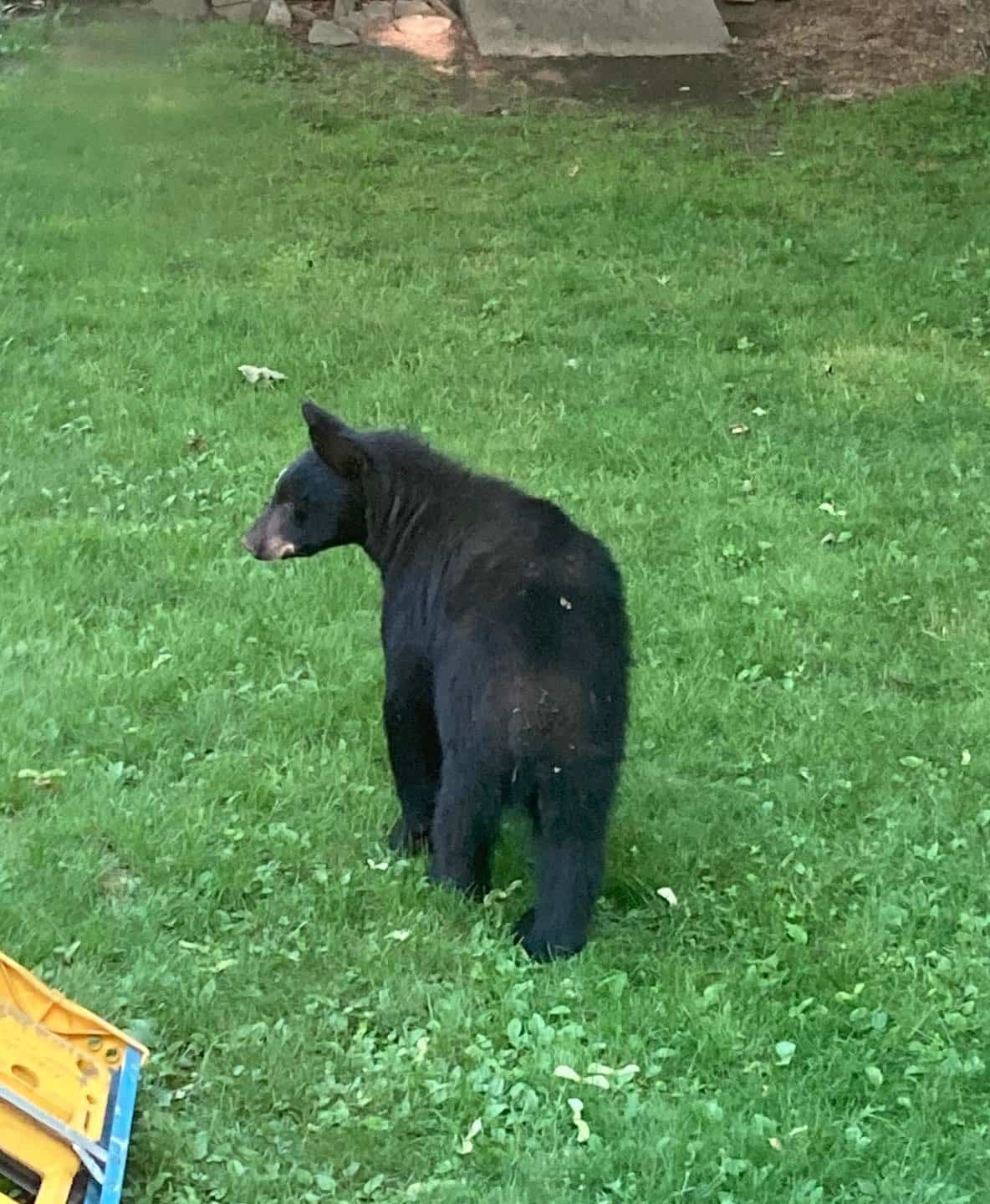
Township Residents: Black Bear Sighting Notice – Don’t Panic, Do THIS Instead!
file photo
the staff of the Ridgewood blog
Twp. of Washington, NJ – Recent days have brought confirmation of Black Bear sightings, particularly on the west side of Washington Township. While this is a common occurrence in our region, understanding how to coexist safely is paramount. The Washington Township Police Department urges all residents to be aware, take preventative measures, and know the correct procedure if you encounter a bear.
Your First Rule: DO NOT APPROACH THE BEAR.
If a bear is seen in the township, please prioritize your safety, maintain a safe distance, and immediately contact the Washington Township Police Department with the exact location.
Are Black Bears Truly Dangerous? Debunking the Myths
Simply seeing a bear walking through your yard is not an immediate cause for alarm. Most bear-human conflicts happen when people:
- Feed bears (intentionally or accidentally).
- Bears are actively feeding on readily available human food sources.
Remember: Bears are wild and unpredictable. Keep all food attractants secure, and under no circumstances should you provoke or feed a bear.
The Million-Dollar Question: What is Attracting Bears to Our Neighborhoods?
Bears have an incredible sense of smell and are opportunistic eaters. They are drawn into residential areas by easy, calorie-rich rewards. Common attractants include:
- Garbage: The number one culprit!
- Bird Seed and Suet: High-fat, irresistible snacks.
- Pet Foods: Especially if left outside overnight.
- Compost Piles: A hidden buffet.
- Grease on Barbecue Grills: Always clean grills thoroughly after use.
Once a bear finds a “reward,” it will likely return, even after the food source is removed. The best solution is prevention—remove the source of attraction before a conflict begins!
Why Now? Understanding Bear Activity
Most bear issues are temporary and peak during the spring and summer months:
- Low Natural Food Supplies: After emerging from their dens and before summer berries ripen, bears travel more extensively searching for food.
- Breeding Season (June to August): Male bears roam widely to find mates.
- Dispersing Young Males: Sub-adult males are often pushed out by their mothers and wander into new territories, including residential areas. These dispersing bears usually move on within two weeks.
By remaining vigilant during these peak times and removing food sources, we can encourage bears to move on quickly.
Why Can’t We Just Move the “Problem Bears”?
Relocation might seem like a simple fix, but it’s not a sustainable or safe solution:
- It Doesn’t Fix the Root Problem: If a food source remains, another bear will simply move in to take advantage of it.
- Safety Risk: Capturing and relocating a wild animal is dangerous for both the bear and the people involved, especially in a residential setting.
- Nowhere is Remote Enough: In our densely populated region, there are few areas remote enough to guarantee a relocated bear won’t simply become a nuisance elsewhere.
Best Practice: Handling Bear Problems Through Prevention
The most effective strategy is to implement these tips now, before a problem starts. Once a bear develops a feeding pattern, it is much harder to break.
🔑 Key Prevention Tips: Deny Access to Food
- Secure Garbage: Store garbage inside a secure building, shed, or garage.
- Day-of Collection Only: If you have curbside service, DO NOT put garbage out overnight. Place it out only on the morning of collection.
- Stop Feeding Birds (Temporarily): If a bear visits a feeder, take it down for 1 to 2 weeks.
- Store Pet Food Indoors: Never leave pet food outside overnight.
- Invest in Bear-Proof Containers: For a long-term solution, consider “bear-proof” containers or dumpsters with heavy-gauge, lockable metal lids.
🚧 Exclusion & Deterrents
- Securing Dumpsters: Ensure dumpsters are bolted, locked, and use heavy metal cans with secure lids. Chain them down if possible.
- Fencing: Fencing off garbage areas, perhaps with a chain-link fence and a barbwire overhang, can be very effective.
- Masking Odor: Some have found limited success sprinkling ammonia or strong disinfectants on garbage to mask food odors (Note: No commercial bear repellents are currently registered for use).
📢 Frightening the Bear (Short-Term)
- Shouting, clapping, or blasting a car horn can temporarily scare a bear away.
- Motion-sensitive lights can also be a deterrent.
- CRITICAL: If the bear does not respond, do not taunt it. This is only a temporary measure.
🧍 Crowd Control
If a bear is sighted, crowds can gather quickly. This seemingly harmless situation can stress the bear and lead to unpredictable behavior. Allow the bear to exit without interference. Law enforcement should disperse crowds to ensure safety.
Official Resource Link
For more detailed information, please refer to safety tips provided by the National Park Service or your state’s Department of Environmental Protection (DEP).
Staying Safe Around Bears – Bears (U.S. National Park Service)
Join the new Saddle River Valley, Ramapo and Pascack Valley Communities Facebook group
https://www.facebook.com/groups/1931704860512551/
#news #follow #media #trending #viral #newsupdate #currentaffairs #BergenCountyNews #NJBreakingNews #NJHeadlines #NJTopStories
